
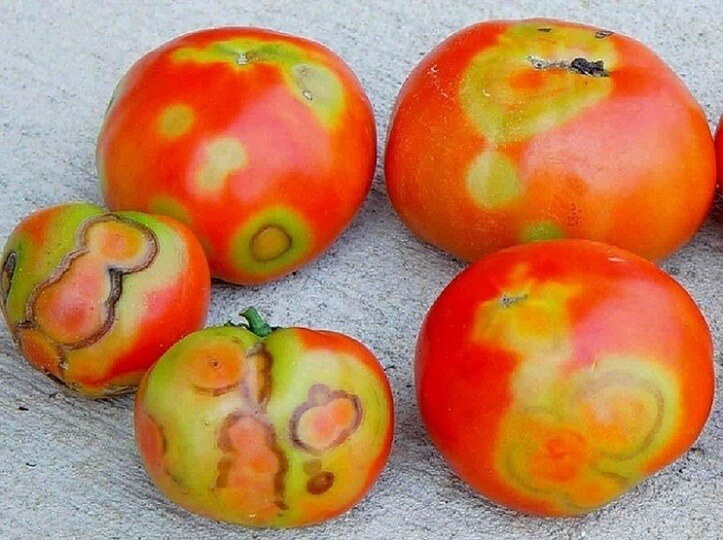
Tomato Spotted Wilt Virus (Tospovirus or TSWV)
This condition, which is transmitted by thrips has recently become the most destructive disease of tomato and several other crops. Thrips start to appear 30 to 40 days after planting and can continue until the end of harvest. Their life cycle is usually between 14 to 32 days, with an exchange of 12 to 15 generations each year.
The thrips rapidly spread, lacerate the leaf tissue and imbibe oozing sap. During feeding, the Tospo virus is transmitted into the plant tissue and the tender foliage become spotted and pale silvery streaks appear on affected parts, the leaves will curl upward, and the fruit will show light brown scars.
What are the symptoms of Tomato Spotted Wilt Virus?
The symptoms of the Spotted Wilt Virus vary but are mostly manifested as bronze discoloration of leaves. Growing tips may die back and stems of the terminals may be streaked. Affected plants often have one-sided growth or may be entirely stunted, with their leaves dropping. Plants infected early in the season may not produce fruit at all, while those infected after fruit set, produce fruit with chlorotic ring spots.
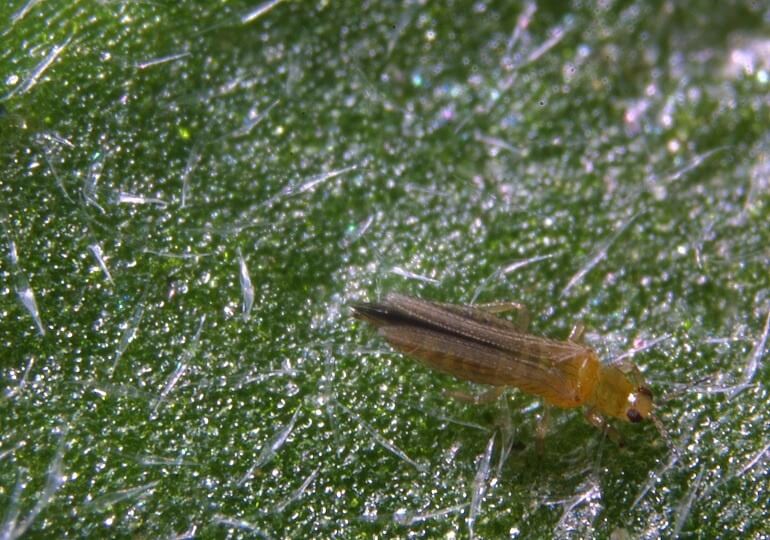
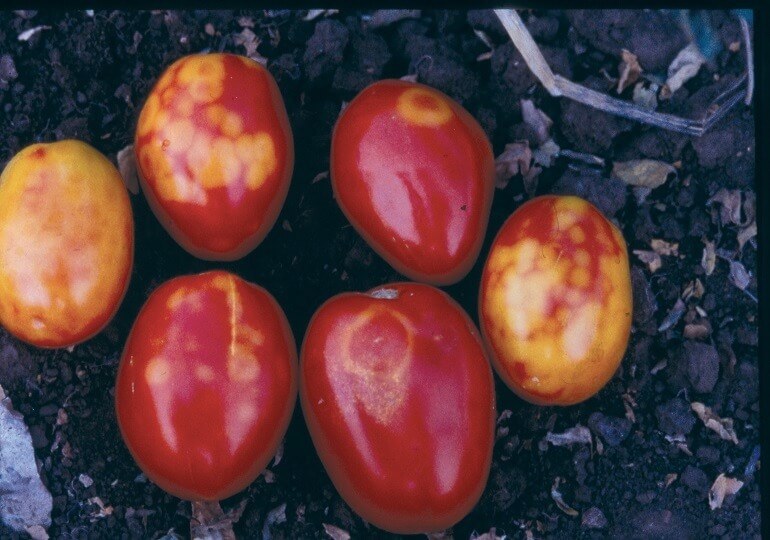
While green fruit has slightly raised areas with faint concentric rings, with ripe fruit, these become much more obvious, turning into red and white or red and yellow rings. These chlorotic lesions are highly visible at full colour of the fruit.
• Bronzing of new leaves and appearance of necrotic rings on leaves
• Necrotic spots on growing tips and stem
• Dieback of plants
• Late infected plants produce fruit with concentric rings
How do you manage Tomato Spotted Wilt Virus?
Prevention is key in managing Tomato Spotted Wilt Virus. Once a plant becomes infected with TSWV, there are no practical ways to cure the virus infected plant. However, early protection of tomato plants is the key for a virus free crop. Use the best available solutions from the stable of Syngenta to manage these insects better-
Voliam Flexi®, a unique broad spectrum insecticide, offers early protection from insect pests and also makes the young seedlings robust and strong throughout its life cycle.

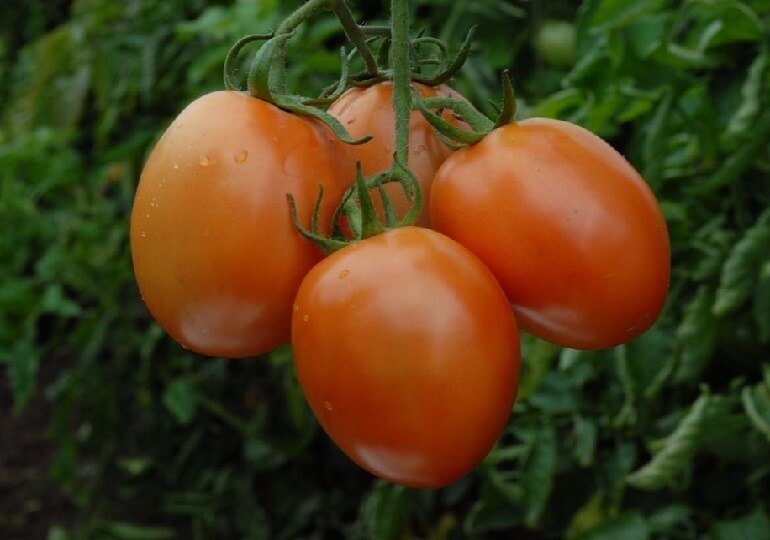
Voliam Flexi has to be applied 8-10 days after transplanting as a soil drench in the root zone of the tomato crop. This ensures both protection and excellent vigor for the crops. To manage further life cycles of early insects, use Alika® after 20-25 days after transplanting your tomato crop.
Alika ensures excellent initial growth and longer duration control of initial pests. This ensures good seedling establishment, when plants are most susceptible to TSWV. Alika has been proven to increase the plant height, while the vigor effect helps the plant to...

Tomato Yellow Leaf curl virus (TYLCV)
Tomato Yellow Leaf Curl Virus (TYLCV), an important disease in the post-rainy and summer tomato, & is transmitted by the tomato whitefly. Whiteflies on tomato plants normally appear 40 to 50 days after planting and can continue until the end of harvest.
Besides the Tomato Yellow Leaf Curl Virus, effects of whiteflies on tomatoes are manifested by two other types of damage.
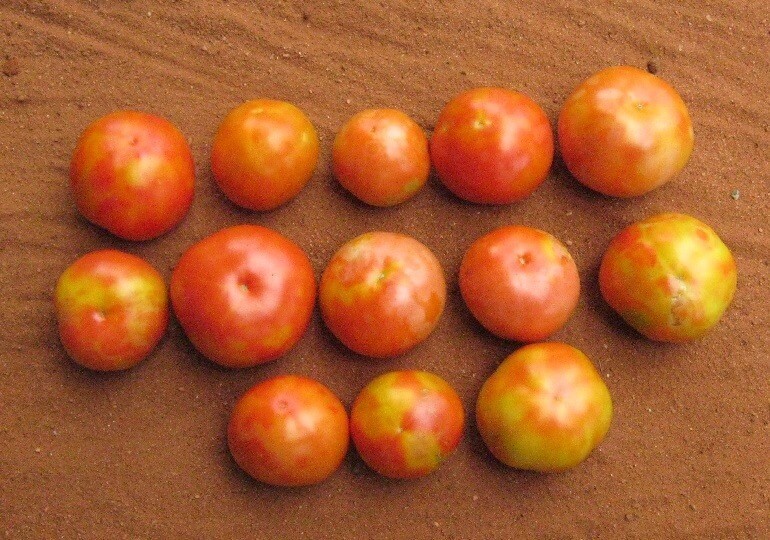
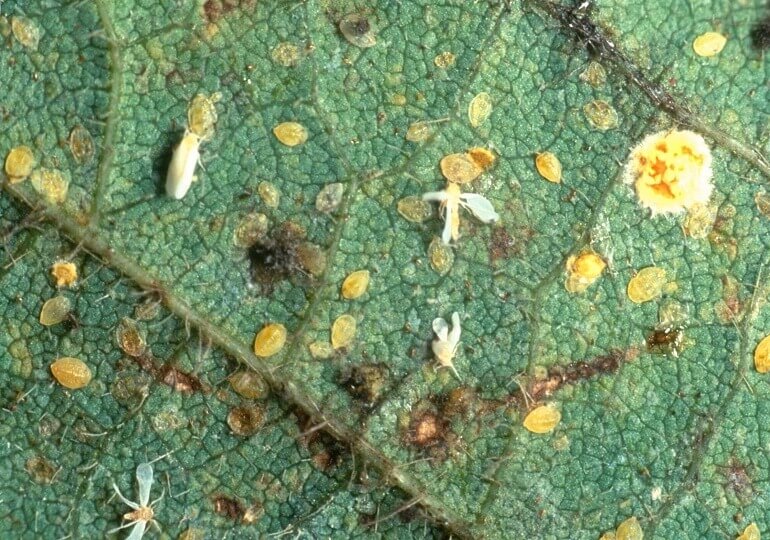
Direct damage
Both nymphs and adults suck sap from under the surface of leaves, which results in yellowing, downward curling and drying of leaves, stunted crop growth, which ultimately, withers with huge yield loss.
Indirect damage
Whiteflies excretes honey dew on crop, and it develops in to sooty moulds. Sooty moulds block photosynthesis of plants and reduce yield and fruit quality.
What are the symptoms of Tomato Yellow Leaf Curl Virus?
The leaf curl is characterized by severe stunting of the plants with downwards rolling and crinkling of the leaves. Newly formed leaves show chlorosis, while the older, curled leaves become leathery and brittle. Plants are stunted because the internodes are shortened. Diseased plants look pale and produce more lateral branches resulting in bushy growth. Partial or complete sterility of the plant is also common.
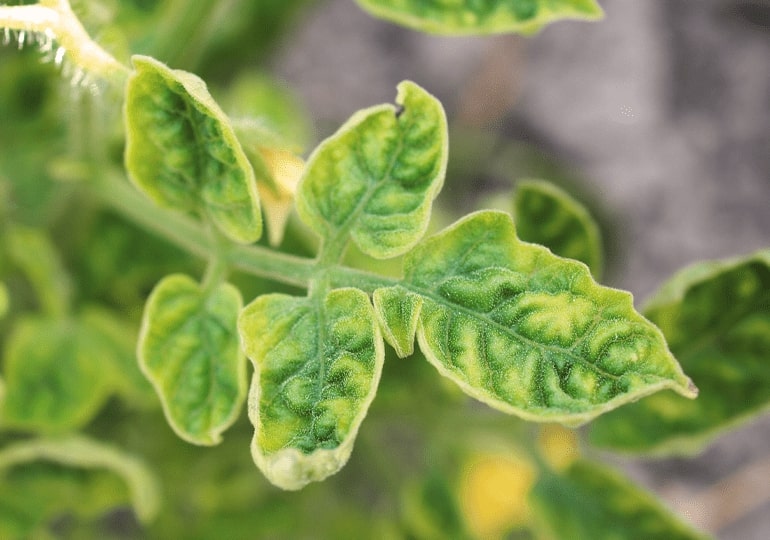
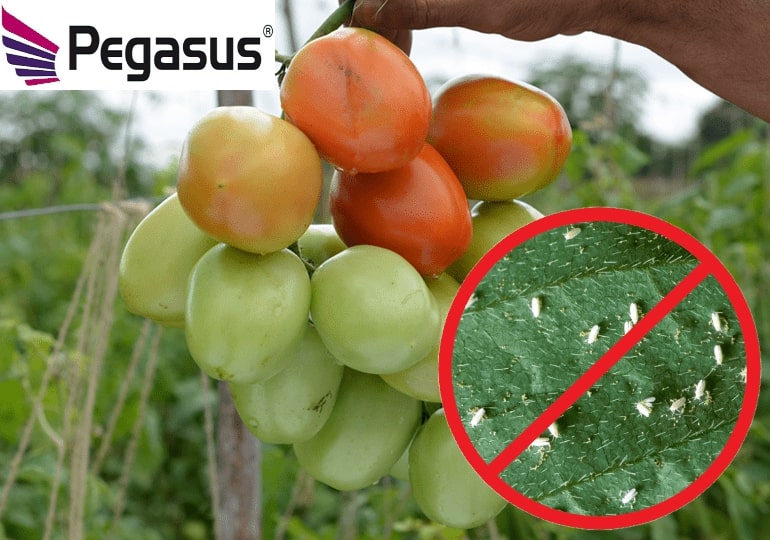
How do you manage Tomato Yellow Leaf Curl Virus?
The most effective treatment for whitefly on tomatoes and control of the Tomato Yellow Leaf Curl Virus spread is through an integrated pest management approach including insecticides, resistant crop varieties & cultural practices.
The control of whitefly on tomatoes can be done with Pegasus® 50 WP, aiming at both adults and nymphs. Pegasus provides 3 way mode of action viz contact, translaminar and vapor action and is known to have no cross resistance issues. Pegasus has to be applied preventively, when the whitefly population is below economic threshold level (ETL...